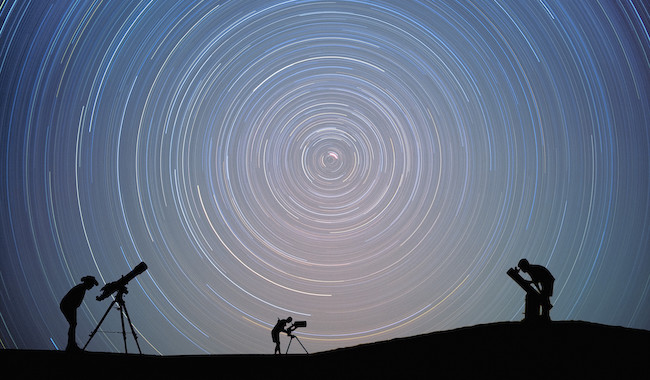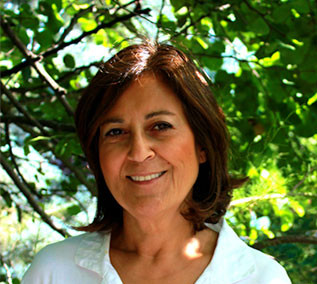
“God is very subtle, but he is not malicious.” –Einstein
Nobel winning Professor of Physics Charles H. Townes (1915-2015) explains why he believes that science and religion may ultimately converge :
Some consider science and religion as fundamentally different domains in their techniques and rendering a just direct confrontation between the two impossible. Others find refuge in one of the two fields and consider the other as contingent or even harmful.
To me science and religion are both universal, and very similar. The goal of science is to discover the order in the universe and to understand through it, even to understand man himself. This order we express as scientific principles or laws, striving to state them in the simplest and yet most inclusive ways. The goal of religion, I believe, is an understanding of the purpose and meaning of our universe and how we fit into it. Most religions have a unifying and inclusive origin of meaning, and this supreme purposeful force we call God.
As much as science and religion are closely linked what makes them seem diametrically opposite ?
The role of faith perceived as one differentiating factor, Townes states that faith is essential to science too, even though we do not so recognize it.
Faith is necessary for the scientist even to get started, deep faith necessary for him to carry out his tougher tasks. Why? Because he must have confidence that there is order in the universe and that the human mind –in fact his own mind –has a good chance of understanding this order. Without this confidence, there would be little point in intense effort to try to understand a presumably disordered and incomprehensible world. Such a world would take us back to the days of superstition, when man thought capricious forces manipulated the universe. In fact, it is just this faith in orderly universe which allowed the change from an age of superstition to an age of science, and has made our scientific progress. The necessity of faith in science is reminiscent of the description of religious faith attributed to Constantine: “I believe so that I may know.” Such faith is so deeply rooted in the scientist’s work that most of us never stop to think that it is there at all.
He points at Einstein’s lifetime work as a convincing example of a belief in an orderly universe. A strong attraction to the order of the universe, an intuitive devotion coupled with reason consisted the core of his work. Einstein spent the last half of his life vigorously investigating gravitational and electromagnetic waves which he believed embraced the earth. Many physicists felt that he was on the wrong track but he had faith in it – in unity and order of the yet invisible. It would take a century after his research, in the year 2016, that the existence of gravitational waves was to be discovered, certifying Einstein’s unshaken conviction.
One of his famous remarks in German placed in the hall of Princeton University captures some parts of his work :
“God is very subtle, but he is not malicious.”
Townes interprets it as, “The world which God has constructed may be intricate and difficult for us to understand, but it is not arbitrary and illogical.”
A second difference commonly perceived between science and religion is based on their methods of discovery.
“Religion’s discoveries often come by great revelations,” says Townes and continues:
Scientific knowledge, in the popular mind, comes by logical deductions, or by the accumulation of data which is analyzed by established methods in order to draw generalizations called laws. But such a description of scientific discovery is a travesty on the real thing. Most of the scientific discoveries are much more closely akin to revelation. The term itself is generally not used for scientific discovery, since we are in the habit of reserving revelation for the religious realm. In scientific circles, one speaks of intuition, accidental discovery, or simply say that “he had a wonderful idea.” If we compare how great scientific ideas arrive, they look remarkably like religious revelation.
French mathematician Raymond Poincaré offers another example of scientific revelation : after having worked on a problem for years, he saw the solution in his dream and when he applied it an awake state, he saw that the problem was solved. Townes recounts similar examples of “Moses wondering in the desert when he suddenly had a revelation by the burning bush, or Buddha who traveled and questions for years, and then one day sat down under a tree where he received “enlightening” answers to his questions.”
Based on the commonality of scientific and spiritual research, insofar both represent human beings’ efforts to understand the universe and make meaning, any person in quest for the truth can adopt a similar researcher mindset. One can make inferences about the real purpose and meaning of his life with her accumulated knowledge and with what she has learned from her personal experience.
Just like the validity of a scientific idea or a hypothesis is tested by running an experiment religious beliefs can also be viewed as working hypotheses, the validity of which can be tested by individual experience. Townes believes:
If we accept the assumption of both science and religion, that truth exists, we should undertake the same task –for ourselves and for mankind, we must use our best knowledge, wisdom and intuition, the evidence of history and wisdom of the ages, the experience and revelations of our friends, saints and heroes in order to get as close as possible to truth and meaning. Furthermore, we must be willing to live and act on our conclusions.
On the human beings’ pursuit of knowledge and existential meaning, Ostad Elahi (1895-1974), a remarkable thinker, jurist and musician, highlights the edge of research including both spirituality and science, in Paroles de Vérité :
When science and spirituality[1] come together, they provide greater insight into truths; otherwise, standing alone, neither in science nor spirituality is complete. Those who are versed in both science and spirituality are extremely beneficial for society.
[1] The term used in Persian is “erfan,” which literally means “gnosis” and refers to all forms of knowledge of a spiritual nature.
Ostad Elahi, Words of Truth, Saying 345, unpublished draft of translation from French, 2019.
Think, March-April, 1966, vol 32, 2. Published by IBM.







